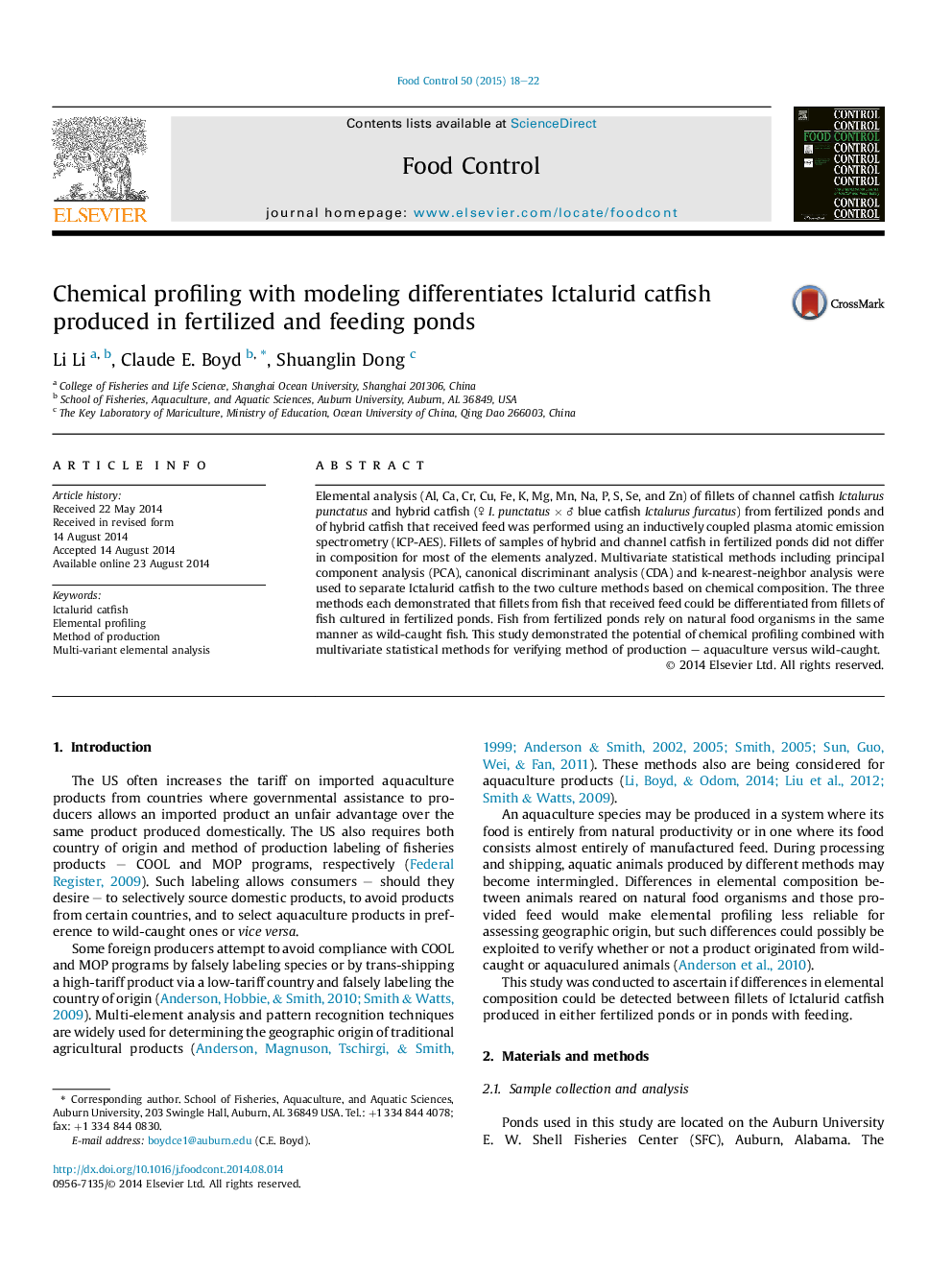| Article ID | Journal | Published Year | Pages | File Type |
|---|---|---|---|---|
| 6390920 | Food Control | 2015 | 5 Pages |
â¢Elemental profiling differentiated Ictalurid catfish from fertilized and fed ponds.â¢Channel catfish and hybrid catfish did not differ in elemental composition.â¢Elemental profiling could differentiate aquacultured versus wild Ictalurid catfish.
Elemental analysis (Al, Ca, Cr, Cu, Fe, K, Mg, Mn, Na, P, S, Se, and Zn) of fillets of channel catfish Ictalurus punctatus and hybrid catfish (â I. punctatus Ã â blue catfish Ictalurus furcatus) from fertilized ponds and of hybrid catfish that received feed was performed using an inductively coupled plasma atomic emission spectrometry (ICP-AES). Fillets of samples of hybrid and channel catfish in fertilized ponds did not differ in composition for most of the elements analyzed. Multivariate statistical methods including principal component analysis (PCA), canonical discriminant analysis (CDA) and k-nearest-neighbor analysis were used to separate Ictalurid catfish to the two culture methods based on chemical composition. The three methods each demonstrated that fillets from fish that received feed could be differentiated from fillets of fish cultured in fertilized ponds. Fish from fertilized ponds rely on natural food organisms in the same manner as wild-caught fish. This study demonstrated the potential of chemical profiling combined with multivariate statistical methods for verifying method of production - aquaculture versus wild-caught.
